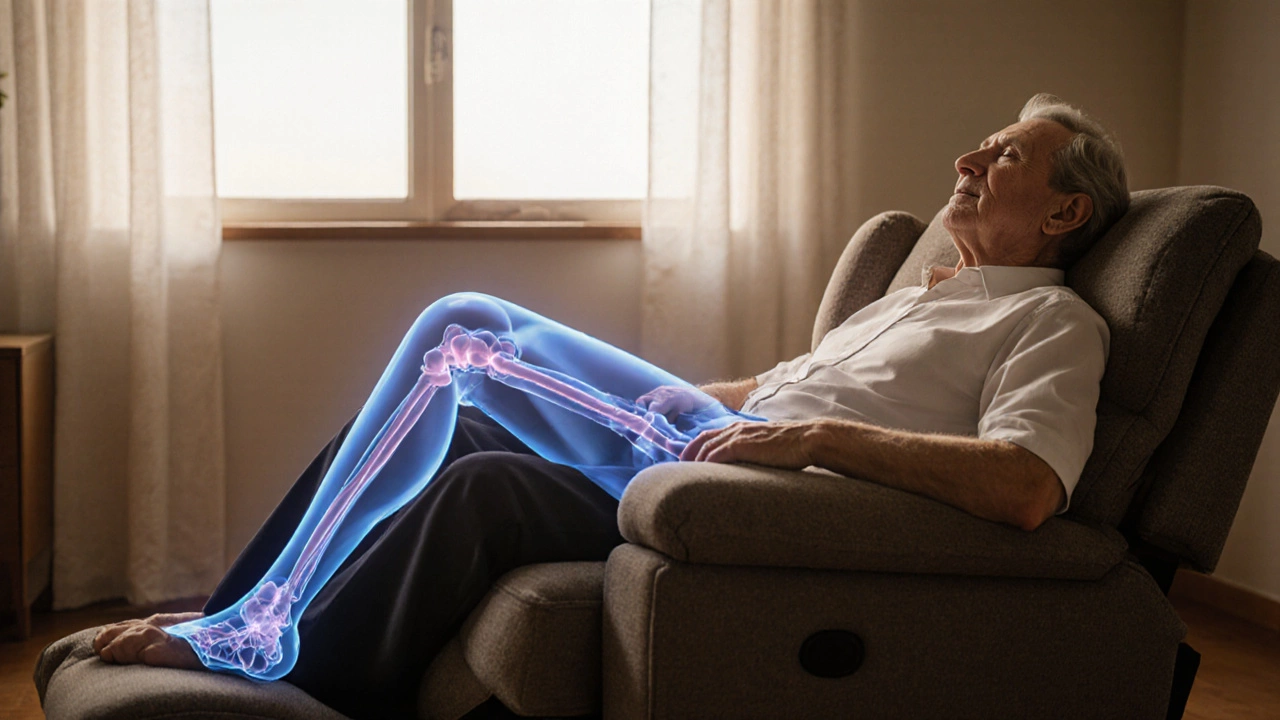
Why Walking After Sitting Feels Hard and How Recliner Chairs Play a Role
Learn why you feel stiff after using a recliner, the body mechanisms involved, and how to pick a chair that keeps you mobile.
When dealing with Hip Flexor Tightness, a feeling of stiffness in the muscles that pull your thigh toward your torso, often caused by long periods of sitting. Also known as tight hip flexors, it can limit movement, create lower‑back pain, and reduce concentration in a classroom setting.
One of the biggest drivers of hip flexor tightness is poor Posture, especially when desks and chairs aren’t designed for the human body. When a student slouches or a teacher leans forward for hours, the hip flexors stay shortened. This constant compression triggers muscle imbalances that lead to pain and reduced focus. Adding regular stretching breaks can reverse the trend, but the foundation starts with furniture that respects natural alignment.
Enter the Ergonomic Chair, a seat built with adjustable height, lumbar support, and a seat depth that lets the hips sit at a 90‑degree angle. When students sit on an ergonomic chair, the hips can open up, allowing the flexors to stay relaxed. Pair that with a desk set at the right height—usually at elbow level when arms rest flat—and you create a workspace where the spine stays neutral and the hips aren’t forced into a cramped position.
Beyond chairs, Desk Ergonomics, the practice of aligning the desk surface, monitor height, and keyboard placement to support natural posture, plays a crucial role. A desk that’s too high pushes the hips forward, tightening the muscles; one that’s too low forces a slump. Adjustable desks let teachers and learners switch between sitting and standing, giving the hip flexors regular relief from static loading.
For schools that can’t replace every chair overnight, simple tweaks work too. Adding a seat cushion that raises the sitting surface a few centimeters restores a proper hip‑knee angle. Installing footrests ensures the feet stay flat, which prevents the pelvis from tilting forward—a common cause of flexor strain. These low‑cost solutions address the root cause without a full furniture overhaul.
But furniture alone won’t solve everything. Incorporating daily Stretching Exercises, targeted moves like the kneeling hip flexor stretch, standing quad pull, and seated figure‑four, keeps the muscles supple. A 2‑minute stretch every hour is enough to undo the shortening that builds up during a lesson. Teachers can lead a quick routine at the start of class, turning a health tip into a classroom habit.
Students often notice immediate benefits: less ache after a long day, smoother transitions between sitting and walking, and better focus during lessons. Teachers report fewer complaints about back pain and more engagement when students feel comfortable. The combination of ergonomic furniture and regular movement creates a healthier learning environment that supports both mind and body. Our collection of articles below dives deeper into each of these areas. You’ll find guides on picking the right ergonomic chair, setting up desk ergonomics for classrooms, practical stretching sequences, and cost‑effective upgrades for tight‑budget schools. Whether you’re looking for a quick fix or a full redesign, the resources will give you clear steps to tackle hip flexor tightness head‑on and keep your learning spaces moving smoothly.

Learn why you feel stiff after using a recliner, the body mechanisms involved, and how to pick a chair that keeps you mobile.